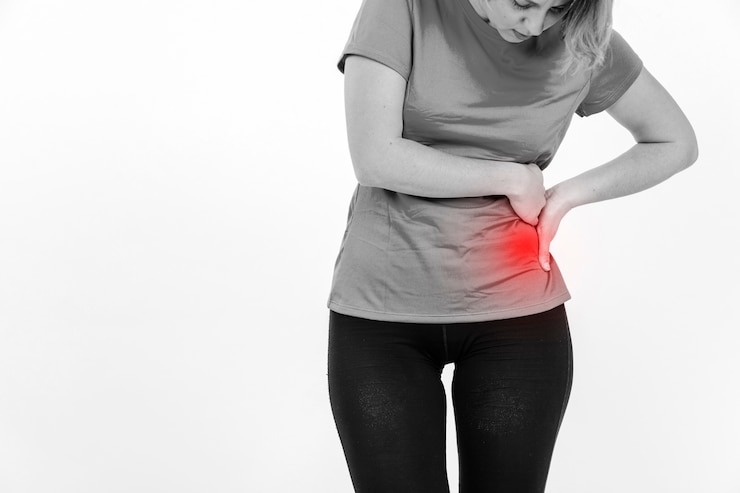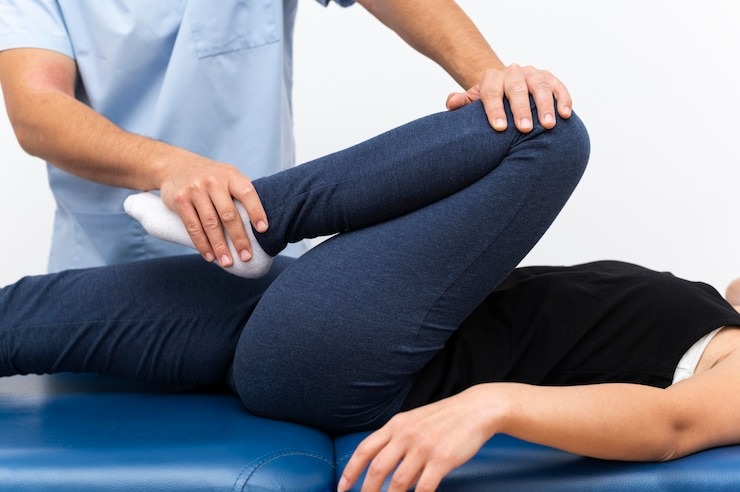The incidence of musculoskeletal conditions leading to hip pain is on the rise among the UK population.
- 10-25% of the UK population suffers from hip pain caused by tendonitis
- Among those over 45, 10.9% suffer from hip osteoarthritis.
- To add, this is getting increasingly common affecting almost 50% people above 65 years of age.
- Even the number of people suffering from hip bursitis is also on the rise affecting about 25% of the UK population.
The consequence? Living in constant pain and discomfort that reduces quality of life.
While lifestyle changes like modifications in your routine, regular exercise, and light physio might work for minor pain, those with severe conditions need to go for treatment and pain management measures like taking pain meds, steroid injections, and surgeries.
Common Causes of Hip Pain
Repetitive motions, strain on a particular body part, and trauma are the leading causes of arthritis and hip bursitis.
However, causes are not always specific or singular. A combination of the below can lead to hip pain:
- Poor posture, strain, imbalances, and overuse
- A sudden increase in activity
- A sedentary lifestyle
- Anatomic variations
- Biomechanical issues and developmental conditions
- Advanced age
- Medical and genetic history
- Obesity
- Previous trauma/ injury
- Congenital conditions
What are the Different Conditions Causing Hip Pain?

The debilitating pain in your hip might be making you limp or sending shooting pains through your back. This might make it tough to do daily tasks and may lead to disability in the long run. While the primary step to managing this includes lifestyle changes, your doctor might recommend steroid injections in the hip for severe conditions.
Pain in the hip may arise from various conditions.
1. Gluteal Tendinopathy
With a higher incidence among older women, this is a common condition caused by the breakdown of tendon tissue in the buttocks and hips. Leading to micro tears in the tendons, the condition can lead to severe pain and inflammation.
2. Iliopsoas Bursitis/Tendonitis
Causes of this condition may be inflammation due to rheumatoid arthritis or psoriasis, injury, or an overactive lifestyle. The pain may radiate into the lower back or knee. Those suffering from this condition may feel a snapping sensation at their hip.
3. Trochanteric Bursitis
Common in adults over 40, this condition can be a result of either injury, surgery, or hypermobility. With damage to the outer edge of the femur (greater trochanter), the area might get inflamed, damaged, or irritated leading to severe hip pain.
4. Hip Dysplasia
This is a medical condition people are usually born with when the hip socket at the thigh bone does not fully develop. This may lead to partial/ complete dislocation of the joint, leading to a labral tear.
5. Piriformis Syndrome
This is caused by excess stress and compression of the piriformis muscle located in the buttocks. You may experience numbness and pain in the buttocks and surrounding area when suffering from this condition.
6. Femoroacetabular Hip Impingement
Leading to damage and inflammation of the hip joint, this occurs due to cartilage damage. You may face stiffness, pain, and resulting arthritis due to this medical condition.
7. Proximal Hamstring Tendinopathy
Resulting in inflammation at the back of your thighs, this medical condition is usually caused by a strenuous, overactive lifestyle. The pain, in this case, may radiate down the hamstring making it tough to perform daily activities.
Each of these affects a different portion of your hip and might call for different diagnostic methods. However, they share common symptoms, treatment methods, and changes in lifestyle recommended by your doctor.
By administering steroid injection in hip, you can deal with the inflammation, increasing your quality of life.
What Other Symptoms Will You See with Hip Pain?
Hip pain carries a host of other physical issues. You are likely to also suffer from the following:
- Weakness and limited motion
- Your hips may lock/ grind with a cracking/ snapping sound
- Stiffness and pain in your hip joint, buttock and thigh
- Difficulty in walking, pronounced limp, change in gait
- Pain when maintaining a sustained posture
- Difficulty in sleeping when lying on the affected side
- Discomfort during exercise, running, climbing stairs
- Tenderness and swelling
Self-diagnostic Techniques for Hip Pain
Before you go to the doctor, you can try out some home tests.
Do you feel a dull ache in any of the following?
- hips,
- upper thighs,
- buttocks, and
- lower back
Does the area feel inflamed, swollen, warm, or red? Does the pain increase when you sit on hard surfaces, or stand for long hours?
It might so happen that you have osteoarthritis, bursitis, tendonitis, or something of the kind. While these cannot be self-diagnosed, if the pain persists, it’s time to visit your doctor.
Steroid injections can be useful in pain management. However, only your doctor can determine and prescribe the right dose.
Clinical Diagnostic Techniques for Identifying Hip Pain Causes
To identify conditions exhibiting hip pain like bursitis, tendonitis, and arthritis, doctors use a combination of the below diagnostic tools:
- Clinical and physical examination includes evaluating the following:
- The range of motion
- Pain patterns
- Impingement Test: flex/rotate the hip
- Ultrasonography
- Electromyography (EMG) to identify issues with the nerves
- Imaging tests
- X-rays to detect bone abnormalities
- MRI scans to identify labral tear, cartilage damage, and soft tissue injury
- CT scans to reveal detailed bone structure and damage before surgery.
How to Treat Hip Pain

Treatment methods are recommended keeping the below criteria in mind:
- Severity
- Physical Health
- Medical History
- Pain levels and tolerance
- Preference
Non-Surgical Methods
These are usually selected over more invasive surgical alternatives.
The methods include:
- Physical therapy for your hips and lower body
- Lifestyle changes
- PRP injections to promote healing
- Hyaluronic acid gel injections
- Ultrasound therapy
- Image-guided treatment for targeted tissue repair
- IFT (Interferential Therapy)
- TENS (Transcutaneous Electrical Nerve Stimulation)
- Ozone injection therapy
- Acupuncture
Surgical Methods
When left to heal on its own, symptoms may get significantly painful and impede daily activities. Therapeutic pain management and non-surgical procedures may fall short in the advanced stages of the illness.
While surgical methods are dependent on the specifics of the illness, the most common methods are:
Pain Management
To manage the debilitating pain that can occur in patients suffering from arthritis, tendonitis, bursitis, and others, you can try the following:
- Take rest and avoid stressful activities
- Use ice to reduce swelling
- Apply heating pads
- Take over-the-counter pain medicines
- Take prescription painkillers
- Herbal and dietary supplements
- Ultrasound-guided steroid injection
Not only can these help manage the pain and symptoms, but it can reduce the associated inflammation.
How Effective is Ultrasound-guided Steroid Injection?
With ultrasound-guided steroid injection that usually contain cortisone, you can achieve the following:
- Reduces inflammation as well as pain
- Drugs can be administered with precision
- Fewer risks and complications
- Targeted, non-invasive treatment
In Conclusion
When caught in the preliminary stages, hip pain can be treated with:
- Regular icing and heating pads
- Moderate exercise and physio
- Taking steroid injection or painkillers as prescribed
However minor, persistent pain and injuries should not be taken lightly. Further, steroids should not be taken without a valid prescription. Seek medical advice as early as possible to reduce future complications.
Visit our home-page for more information




